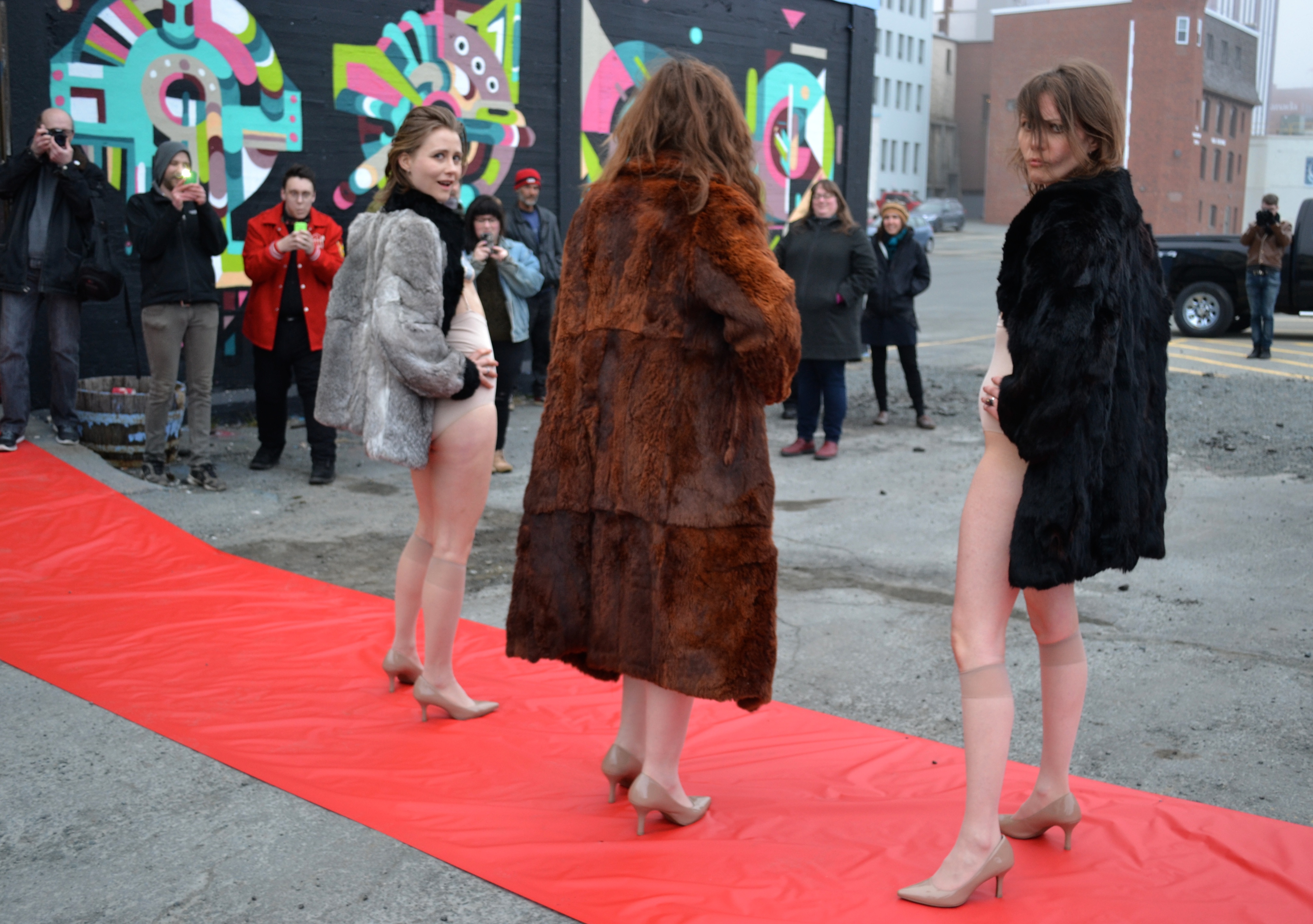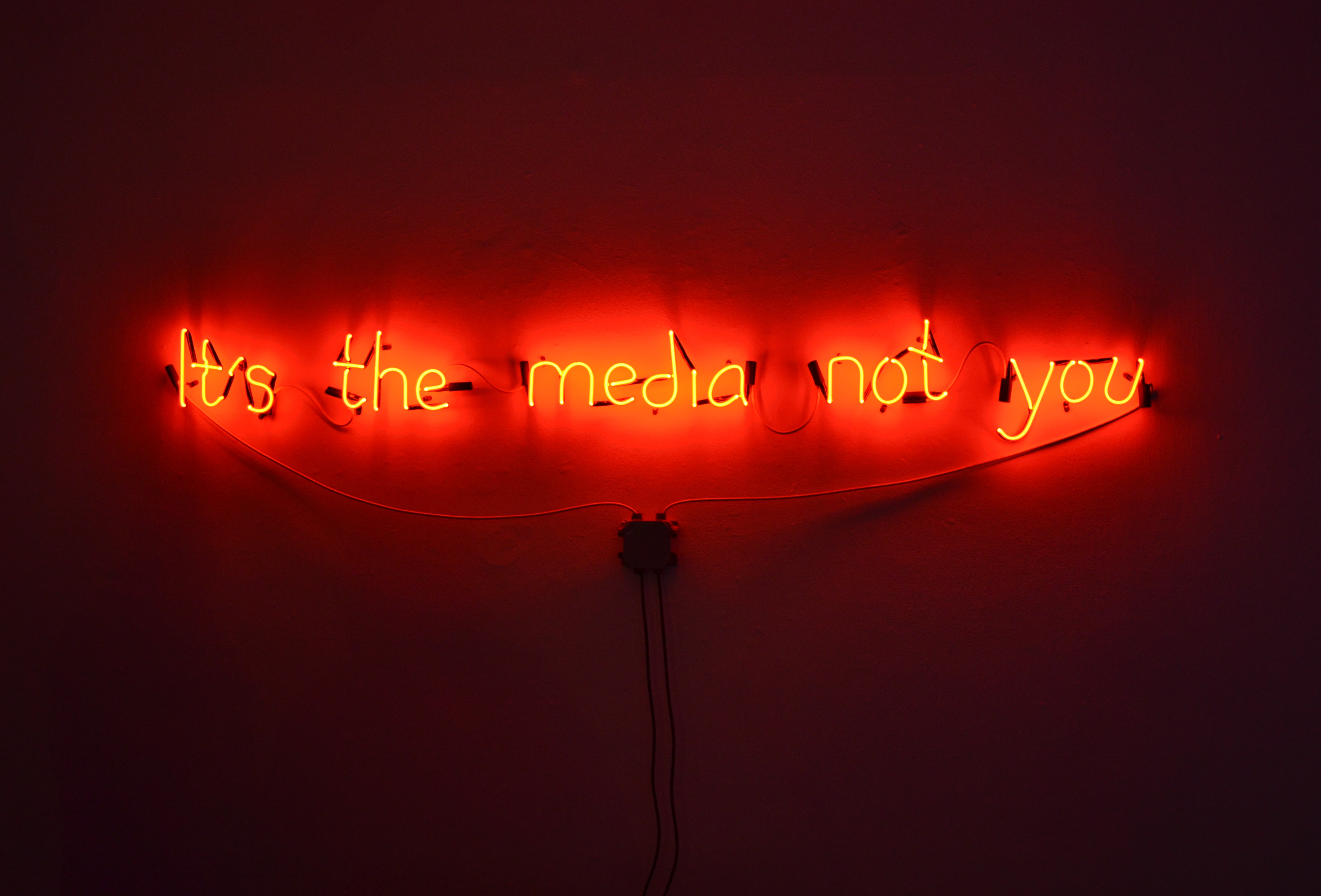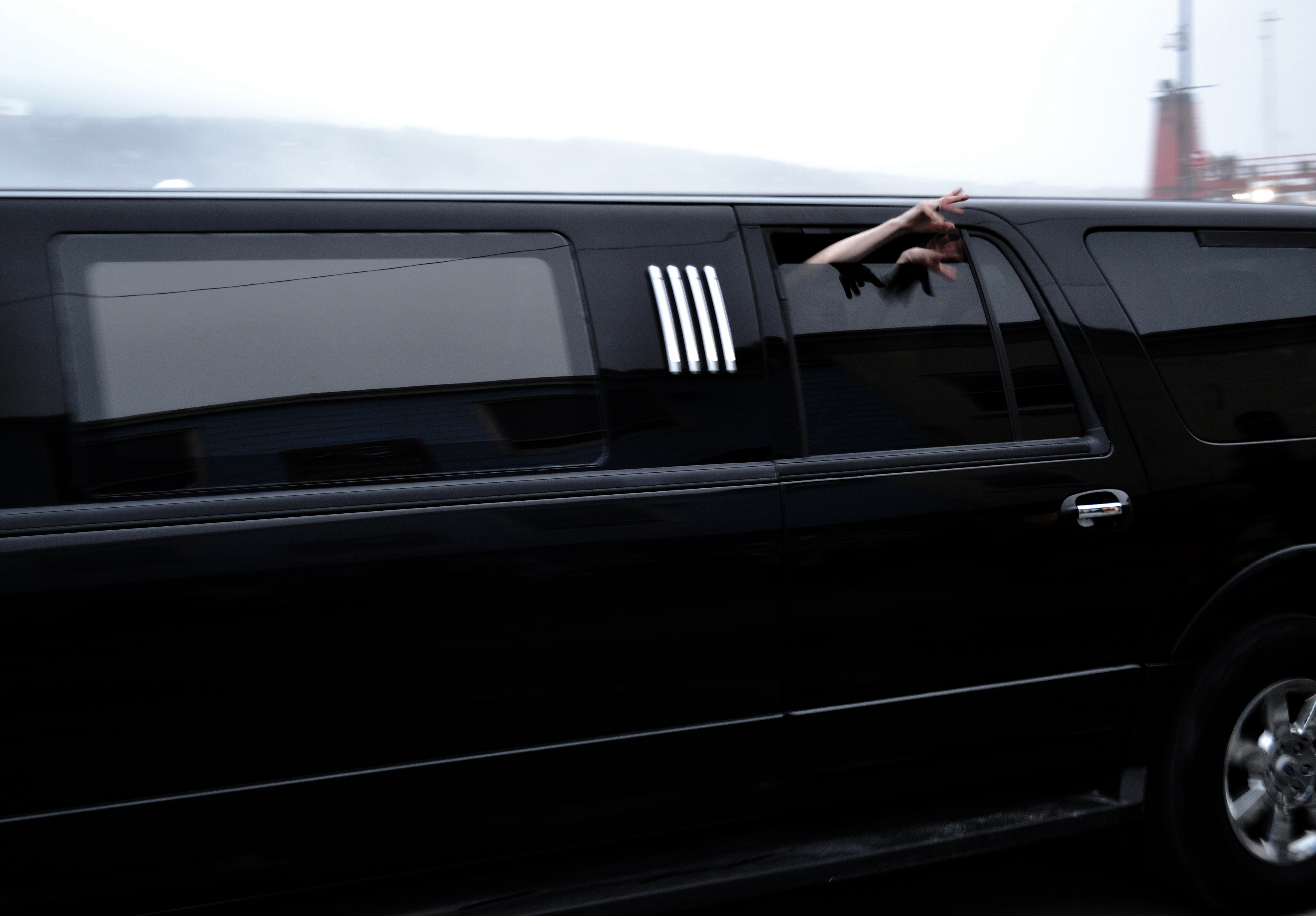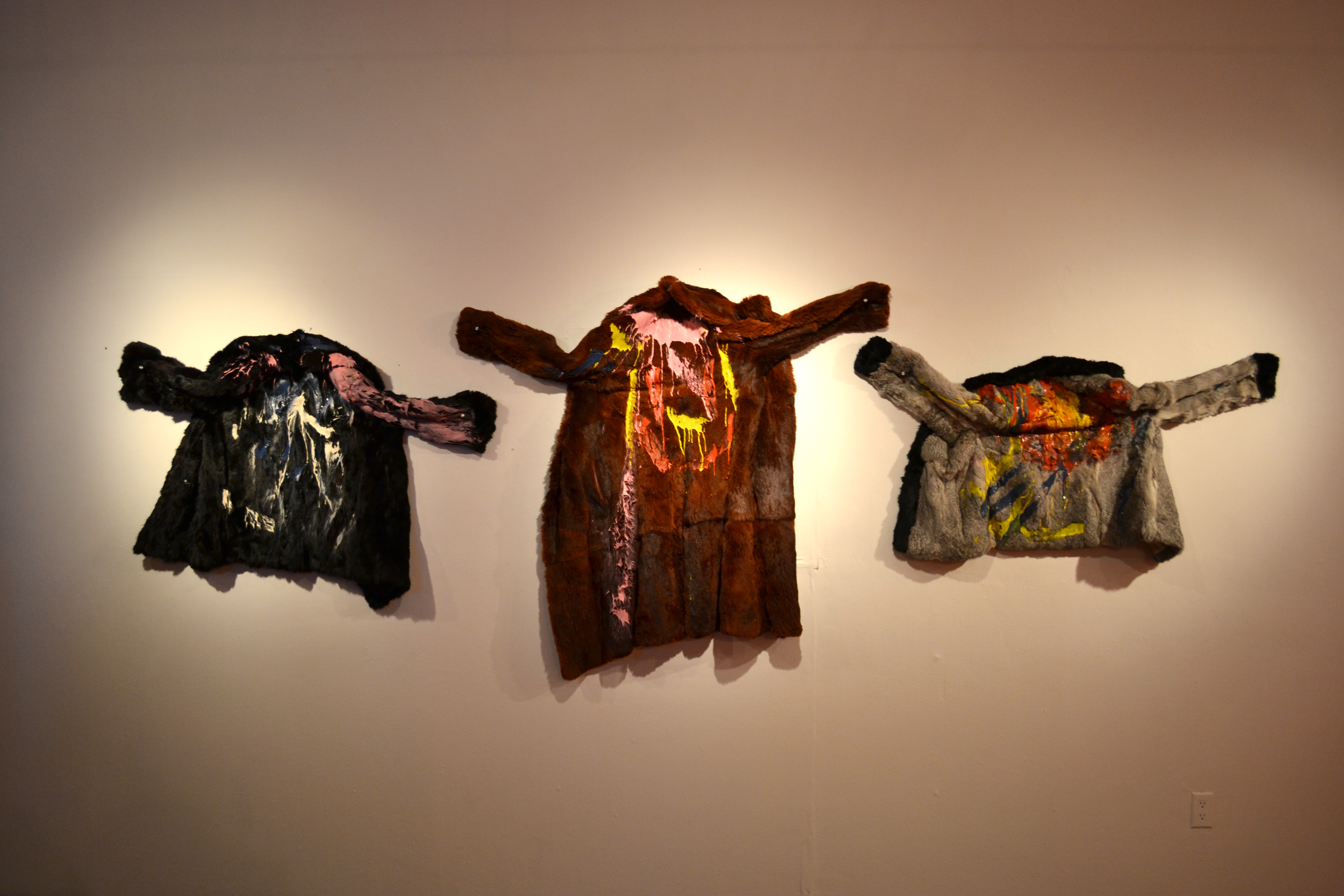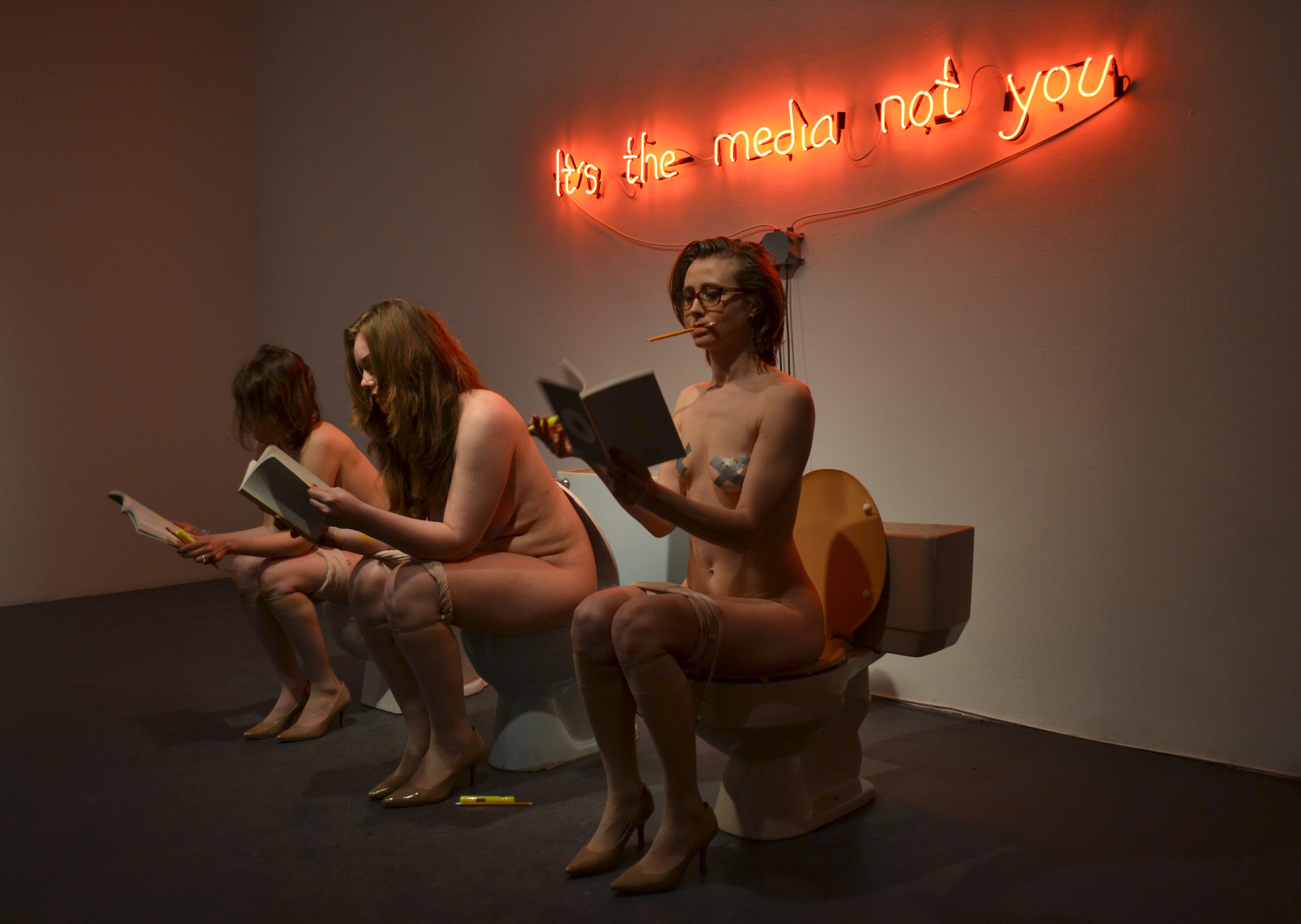︎
Cracking the Code
Cracking the Code by It´s the Media Not You! Exhibited in 2015 at Easter Edge Gallery in Newfoundland, Canada.
Text by Sara Tilley
During two nights at Eastern Edge Gallery, Icelandic artists Eva Isleifsdottir, Katrin Inga Jónsdóttir Hjördísardóttir and Rakel McMahon presented four actions, inspired by research into the
history, use and effects of performance art, and, as Isleifsdottir expressed in an interview, the reasons why people don’t like it. On April 21st, 2015, they presented Inspirational Moment, inverting the tradition of the artist talk—instead of a talk about the work, the talk is the work. The first artist spoke like someone at an AA meeting, tearfully confessing her lifelong addiction to Art, backlit by the red neon sign: It’s The Media Not You. The second speaker narrated her career like a standup comic—brashly, confidently, with expert pauses in all the right places. Finally, a Serious Performance M o m e n t b y t h e t h i r d a r t i s t , w h o i n t o n e d “Aaaaaaaaaaaaaarrrrrrrrrrrrrrrttttttttttt” into the mic so intensely that my wine glass shook. She spoke of believing that art could change the world, then: “What shit! If I wanted to change the world I’d build a school in Africa, not make art.” She pulled out her tampon and dropped it into her glass. From where I was sitting, it didn’t appear to be bloody. The three women revealed crudely painted t-shirts: Obsession, Ego, Purpose. Purpose exclaimed “Let’s get drunk!” and the performance dissolved into a standard art opening.
Two nights later, I returned for Crying Limmo, Peta Loves Pollock, and The Text About Art is a Work of Art. We waited outside of Eastern Edge, flanking the impromptu red carpet, some with cameras ready, not sure what we were waiting for. A limo drove by. Was this the performance? It drove by three more times, and we began to cheer. Finally, it pulled up and the artists spilled out, an over-the-top image of tabloid celebrities in matching uniforms: stilettos, nude Spanx, black X’s on their nipples, fur coats. We took their pictures, becoming the capital-letter Media now. They weren’t ‘doing’ anything, just posing. One bent over and fingered her asshole briefly, and then they walked inside. I was struck by their non-nudity, the decision to keep a thin layer of cloth and tape between artist and observer, though for whose benefit, whose sense of ‘decency’, I wasn’t sure. Inside, we were invited to cover them with brightly colored paint, the fur coats saturated, PETA Loves Pollock indeed, the artists becoming the medium in an absolutely literal way. They nailed the coats to the wall with the arms outstretched, three crucifixes/animal pelts/abstract works. They posed, observing the work, and we observed their act of observation, and the whole thing got funnier when one reached over and tucked in the tag on another’s Spanx— an unconscious gesture that instantly cut through the layers of performance. They proceeded to three toilets, backlit by the neon sign and surrounded by books. Each pulled down her bodysuit and sat in a motion that allowed the most private areas to remain hidden, save for a brief, seemingly accidental flash of pubic hair from one. They didn’t really urinate, they didn’t shit. It was a sanitized enactment of defecation, performed while reading quotes from Perspectives: At the Convergence of Art and Philosophy, an overview of contemporary art in Iceland by eight curators with degrees in philosophy (Reykjavik Art Museum, 2011). By reading quotes to us from other people’s writing, the artists reinforced their role as objects in the work. They are the canvas we paint on. We take the pictures, they stand and pose. Women— white, young, beautiful, educated—their bodies and life stories supposedly laid bare before us, offered as material goods for our consumption. It’s funny work, but is it more than an elaborate art- world in- joke? What does this act of performing ‘nakedness’, of ‘object-ness’, mean? I have my theories, but the work itself suggests that theory is, well, a pile of shit. Performance art is literally, actually alive, and consequently feels risky, for both sides. These experiments left me laughing and full of questions. I was especially charmed during those moments when the artists couldn’t quite conform to their use of bodies as objects, and we’d catch a tender flash of humanity —Spanx tags, pubic hair —peeking out from underneath.
